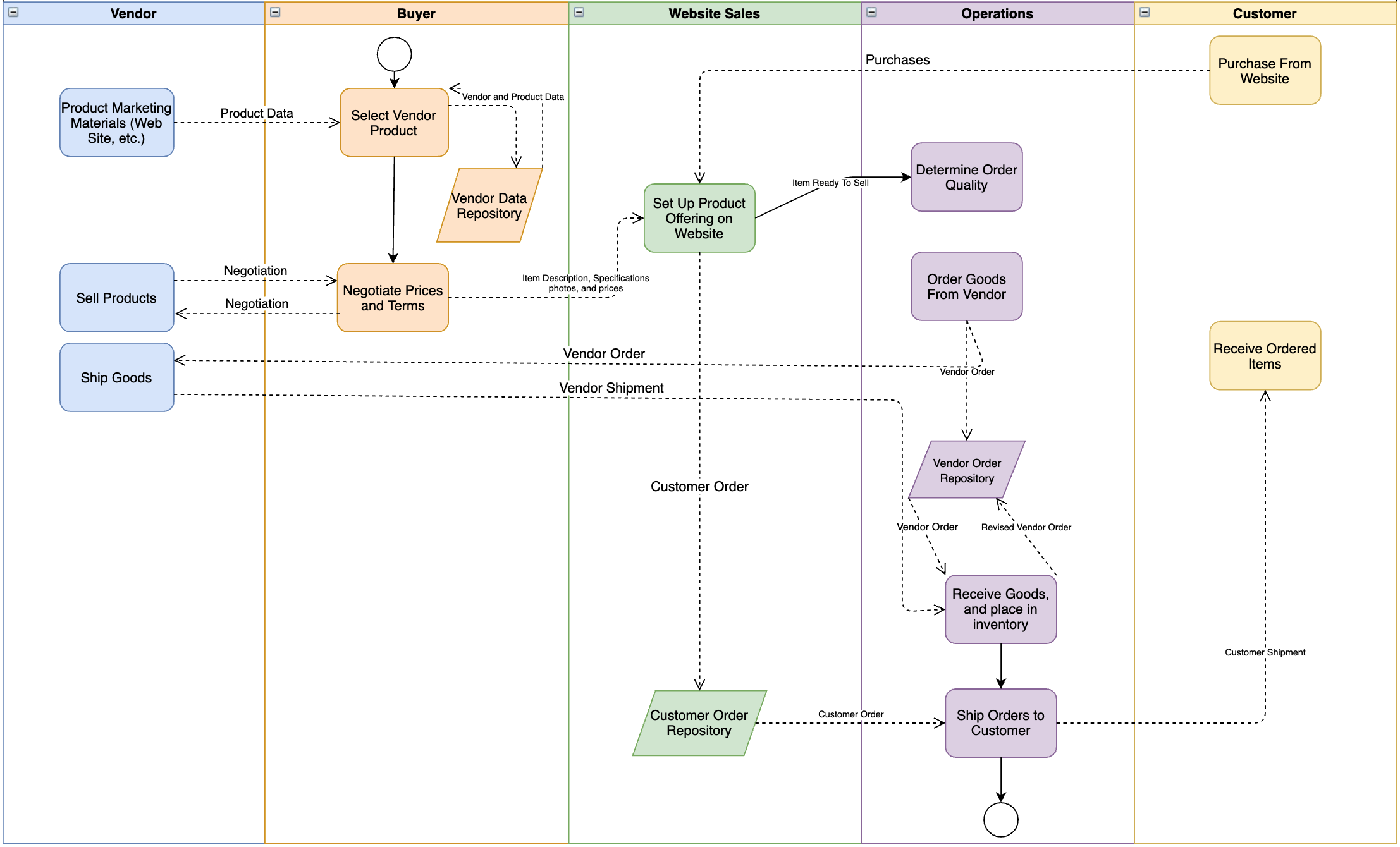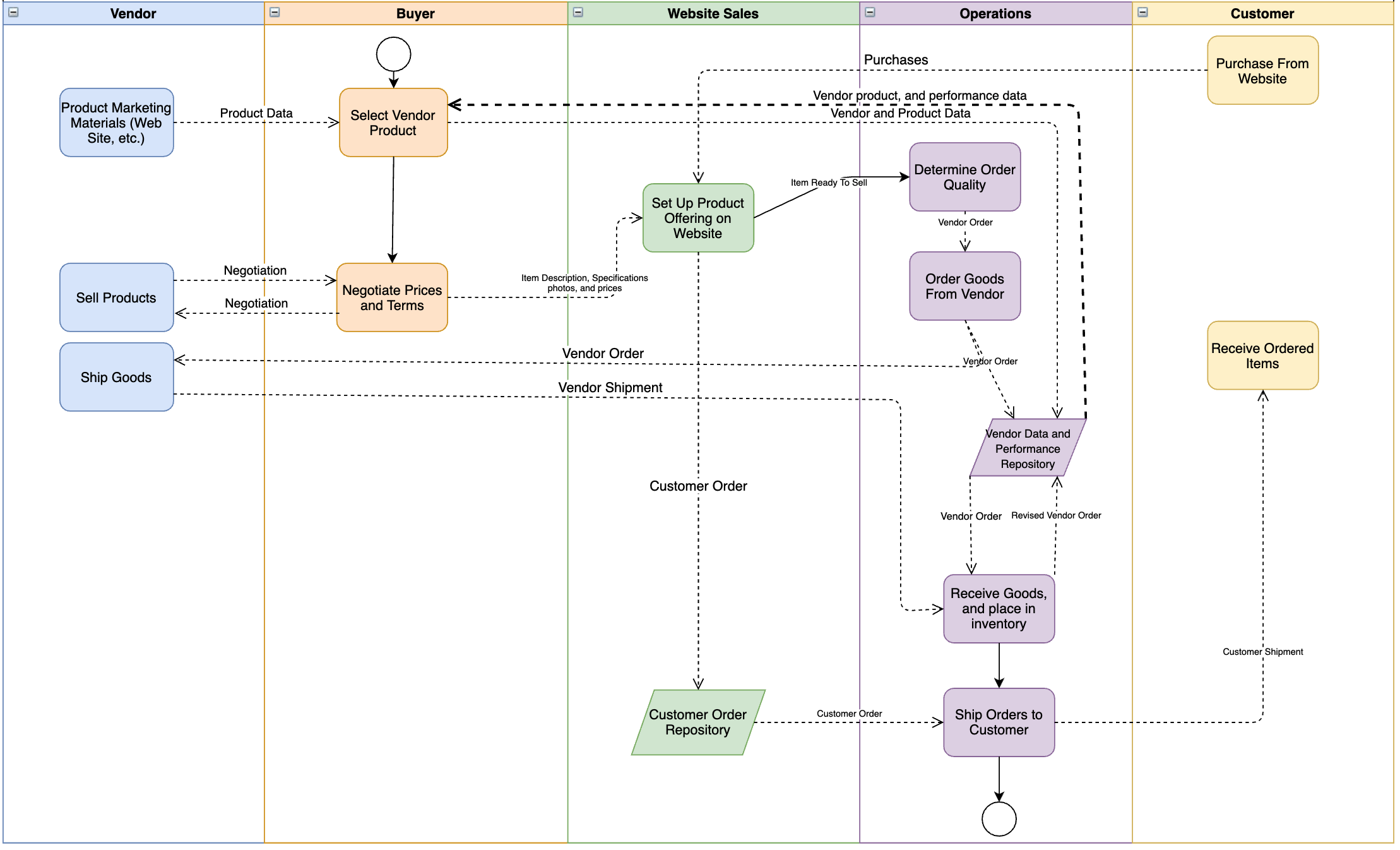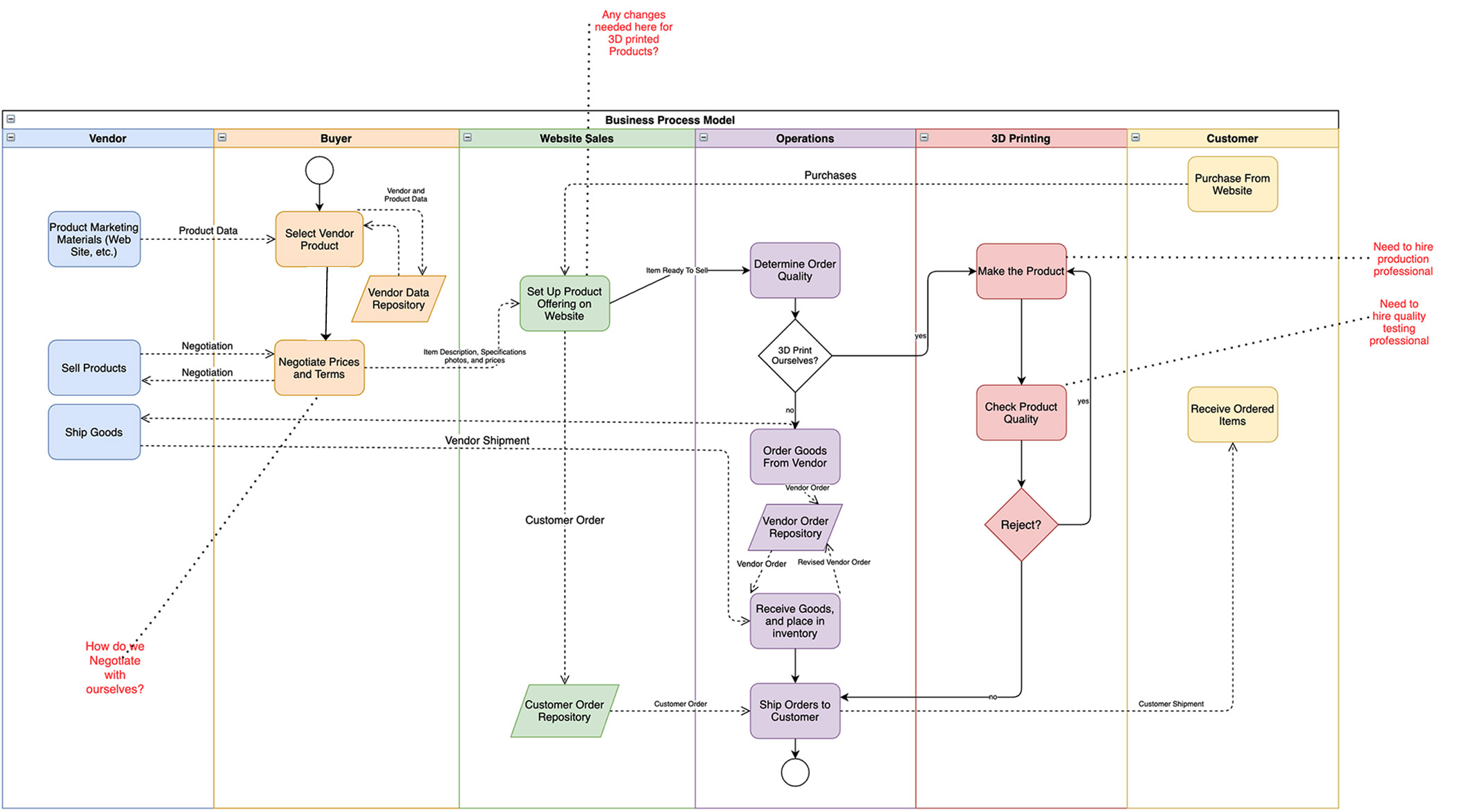My Mountain Bikes and Swim Lanes
MyMountain Bikes Process
MyMountain supplies bicycle parts at discounted prices. One thing that differentiates MyMountain from their competitors is that they post extensive diagrams and manuals showing how the parts fit together and are used. These make available parts from many suppliers becoming a one stop shop for a customer trying to upgrade or repair their rig. Their clientele are mostly aficionados who purchase hi tech parts to upgrade their Mountain Bike setups or replace damaged parts. My Mountain enlists vendors to supply parts at specified prices that can be advertised on the My Mountain website (with certain terms.) Once there is a commitment from a vendor to supply parts, it places the parts’ descriptions, photos, prices, and related sales data on its Web site. My Mountain then orders an initial quantity of parts, receives them from the vendor, and places them in inventory. As orders from customers are received, operations staff pick the items from inventory and pack and ship them. From time to time, parts need to be ordered to restock inventory, but we will not consider the reorder process at this time this example. MyMountain must keep records of all the activity in order to pay vendors, bill customers, check inventory levels, pay taxes, and so forth. These business activities are typical of a small online retailer with a relatively simple inventory. Even so, you will see there are ways for MyMountain t Bikes to improve what it’s doing.
A business process is a prescribed network of activities (Steps) for accomplishing a business function. Following is a diagram of the existing ps process. This diagram, which is a model, or an abstraction, of the activities, is constructed using the symbols of Business Process Modeling Notation, or BPMN. This notation is an international standard for creating business process diagrams.

Study the diagram above and familiarize yourself by walking through the process steps. Can you see any areas of redundancy or where the process can be improved?
What did we do below and why?

Lets talk about shared databases. In a traditional siloed approach each business function might maintain their own database. What is the result of this?
Duplication of effort and restricted access? Would it be more beneficial to share across functions? How and why?
MyMountain is thinking about whether it makes sense to 3DPrint some of the parts instead of ordering everything from suppliers. What changes might you recommend to make this work?

My Mountain
Use an information system to store vendor data
- Store results of vendor analysis (could be a manual process)
- Store
- Product and Performance Data
- Product Specifications
- Vendor Performance
Questions
- If we are discussing 3D printing with the owners of MyMountain, how would you explain your ideas without the diagram?
- With the diagram?
- Suppose you have to define the requirements for a new vendor/product information system, based on what you know so far what would you want to include?

